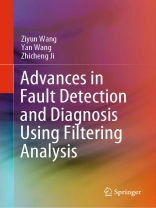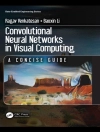The book provides fault detection and diagnosis approaches from the perspective of filtering analysis. In order to design fault detection filters, it uses set-membership principles to deal with the unknown but bounded noise term. Some regular geometric spaces are introduced, such as the ellipsoid, polyhedron, interval, to describe the feasible parameter sets of the given system. Both principles and engineering practice have been addressed, with more weight placed on engineering practice. Some typical application cases are studied for fault detection and diagnosis in detail, which are power converter, permanent magnet synchronous motor, pitch system of wind turbine. Given its scope, the book offers a valuable guide for students, teachers, engineers and researchers in the field of fault detection and diagnosis.
Cuprins
Introduction.- Design of state space based fault diagnosis filter.- Design of ellipsoid set-membership based fault detection filtering.- Design of polyhedron set-membership based fault detection filter.- Design of interval set-membership based fault detection filter.- Design of orthotopic set-membership based fault diagnosis filter.- Fault diagnosis method based on composite set-membership filter.- Summary.
Despre autor
Prof. Ziyun Wang, his research interests include fault detection and fault diagnosis, filtering technique, power converter analysis, mobile robot control, wind turbine analysis. More than 20 articles have been published in the fault detection and filtering area.
Prof. Yan Wang, her research interests include system identification, fault detection, energy-efficient control of complex manufacturing system, industrial networked system, evolutionary computing. More than 20 articles have been published in the fault detection and filtering area.
Prof. Zhicheng Ji, his research interests include filtering technique, morden control theory, industrial networked system, optimal control of complex manufacturing system. More than 40 articles have been published in the fault detection and filtering area.












